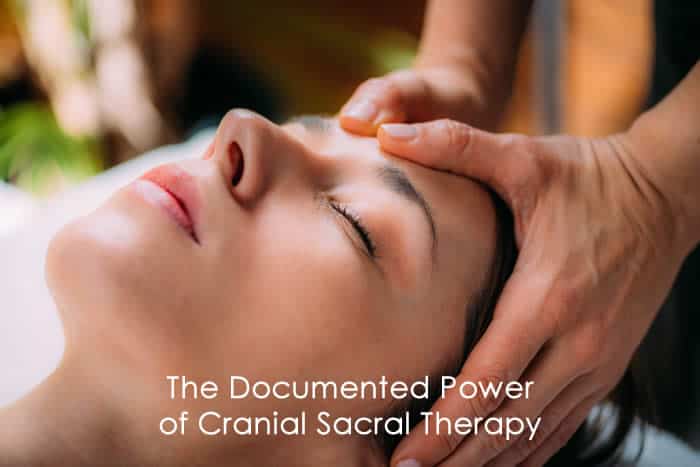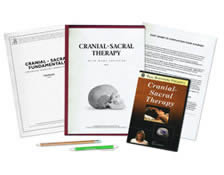

Cranial sacral therapy has become an integral bodywork modality employed by professionals of many health vocations. This powerful work can be employed by massage therapists, chiropractors, physical therapists, osteopathic doctors and others. Always check your local and state laws to verify scope of practice in your jurisdiction for any bodywork employed.
The premise of cranial sacral therapy is that bones of the axial skeleton (cranium, spinal, and sacrum) can be mobilized to facilitate greater flow of cerebrospinal fluid (CSF), thus easing restrictions and compressions within the central nervous system and surrounding anatomical structures. With greater flow of cerebrospinal fluid, the brain and spinal cord are nourished with metabolic waste removal. These effects will improve efficiency of the cranial sacral system.
Dr. William Sutherland
Cranial sacral therapy is first attributed to the work of Osteopathic practitioner William Sutherland in the late 19th century. Also known as “Bonehead Billy,” Dr. Sutherland developed a helmet that indicated cranial bone movement. His contemporaries discredited his theory and experiments on cranial bone movement. Bonehead Billy spent the remainder of his life working to confirm both cranial bone and cerebrospinal fluid movement. (1)
Dr. John Upledger
Dr. John Upledger, a medical student at Michigan State University in the late 1970s, discovered movement of the dura mater surrounding the spinal column during open spinal surgery. This discovery fascinated Dr. Upledger. His career developing and employing modern day cranial sacral therapy techniques spanned decades.
He spent the remainder of his life conducting formal research confirming the benefits and virtues of cranial sacral therapy. The institute carrying his name and legacy today continues to present workshops and formal research worldwide on this sacred work. (2)
The Light Touch of Cranial Sacral Therapy
Today there are numerous schools presenting cranial sacral therapy. Although techniques and fine details may vary, the general premise of the work remains the same universally. When one learns cranial sacral therapy, one learns how to manipulate axial skeleton bones in manners to decompress the cranial sacral system, thereby increasing cerebrospinal fluid flow around the brain and spinal cord.
Cranial sacral therapy techniques appear superficial and simple yet are profound in impact. Light touch (commonly described as five grams, aka the weight of a nickel) is utilized by the therapist to facilitate slight shifting of axial bones along fibrous joints within the skull and sliding articulating services along the spinal column and sacral base.
Primary Respiratory Mechanism
When applying light touch, a practitioner attempts to feel the primary respiratory mechanism (PRM) within a client. Commonly called the “cranial rhythm,” the PRM arises from the fluctuations of cerebrospinal fluid surrounding the brain and spinal cord. Through the ripple effect via fascia, the PRM has wide reaching effects and can be palpated to indicate the general state of client health.
The rate, strength and symmetry of the PRM are measured by a therapist to identify areas of restrictions and compressions. Feeling the PRM at palpation stations at the beginning and end of a cranial sacral session can be used as an evaluation tool.
Common palpation station locations upon the body include the:
- feet
- thighs
- hips
- heart
- shoulders
- and crown of head.
Flexion and Extension
The PRM can be described as an ocean wave crashing onto a shoreline. A practitioner may feel a sense of an outward push upon their hands as if the body is “breathing in” or “filling.” This is the flexion stage of this rhythm. It may feel like an ocean wave is cascading onto a beach shore.
Conversely, when the body feels as if it is “breathing out” or “emptying,” this is termed the extension stage of the rhythm. It may feel like the same wave receding back into the ocean.
A common misconception is that there is no movement detected within fibrous suture joints within the cranium. However, movement as little as 100 microns has been detected within suture joints articulating cranial bones. There may be some degree of ossification of these suture joints as people age, yet not entirely. A cranial sacral therapist may hone their intuitive touch to detect cranial bone movement within a patient’s skull of any age.
Clients Report These Benefits of Cranial Sacral Therapy
There are numerous benefits reported by practitioners of the work. Many clients report improvements in signs and symptoms related to:
- ADD / ADHD
- Dyslexia
- Learning Challenges
- Lyme Disease
- Anxiety Disorders
- Depression
- Metabolic Syndrome
- Autoimmune Diseases
As restrictions and compressions ease within the cranial sacral system, related parasympathetic responses seem to play a key role in alleviating the aforementioned conditions.
Research Demonstrates Benefits of Cranial Sacral Therapy As Well
There are documented researched benefits to cranial sacral therapy and they confirm many of the anecdotes shared by clients.
Neonatal Network
Neonatal Network published an article in 2016 confirming that cranial sacral therapy is an ideal manual therapy helping infants improve feeding within those with feeding difficulties. Because cranial sacral therapy can help realign soft tissues, it can help feeding challenges caused by jaw misalignments, compressed nerves, misshapen heads, and/or functional challenges with sucking and swallowing. (3)
SOTO USA
SOTO USA online published an article in 2015 highlighting the role of cranial sacral therapy in aiding autistic individuals with language delays. Cranial sacral therapy was included in broad program interventions with autistic children in efforts to improve language skills. The article acknowledged that treatment options selected must consider both the physical component and neurological processing components which can both be aided with cranial sacral therapy. (4)
Medical Acupuncture
Medical Acupuncture online reported that cranial sacral therapy, coupled with visceral manipulation, can greatly aid intervention efforts with patients recovering from concussions. Marked improvements were witnessed regarding pain intensity, cervical range of motion, memory cognition and sleep in concussed patients. (5)
BMC Musculoskeletal Disorders
Published in BMC Musculoskeletal Disorders online, a systemic review and meta-analysis of cranial sacral therapy controlled trials showed positive significant effects of cranial sacral therapy, most notably with pain and mental function lasting up to six months on average. (6)












